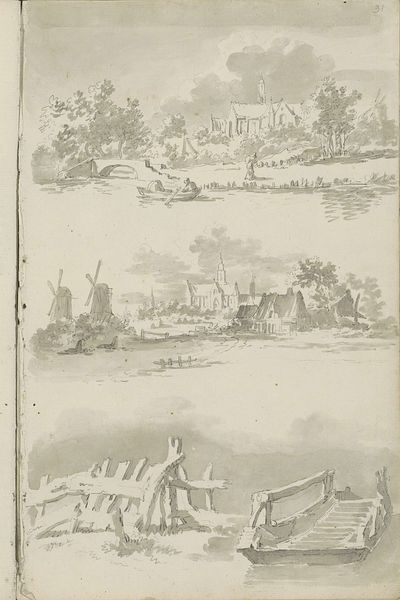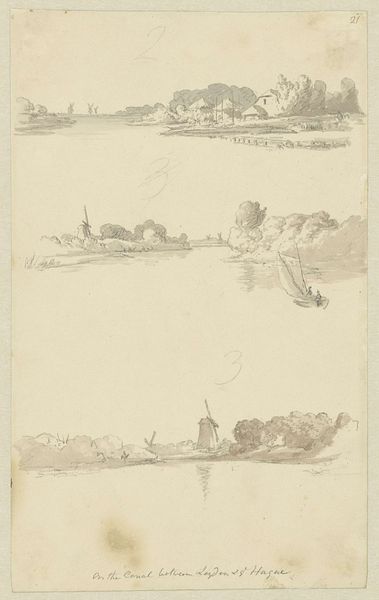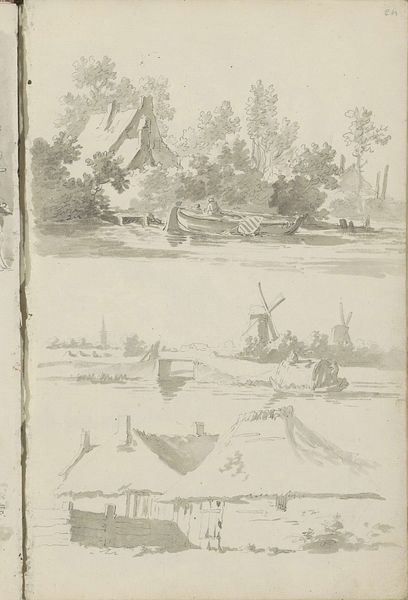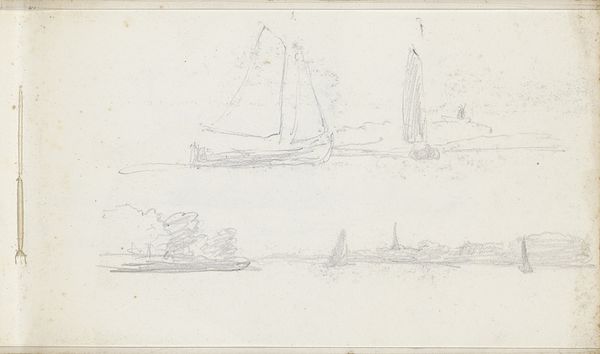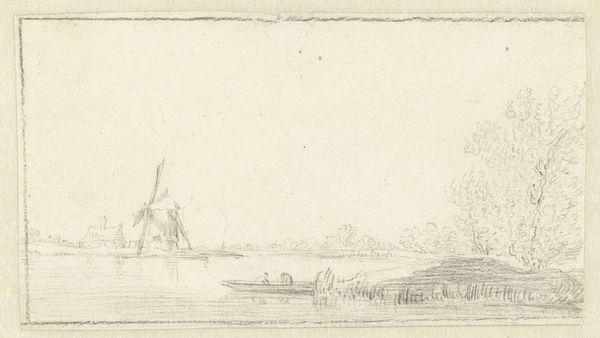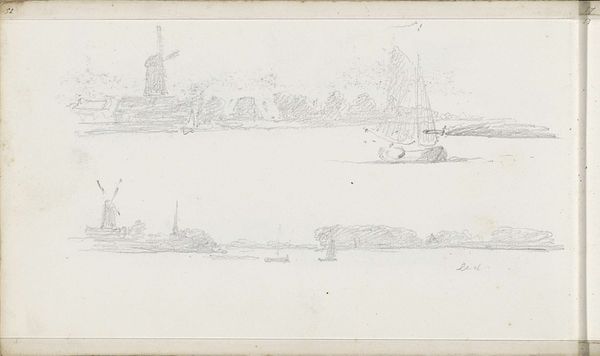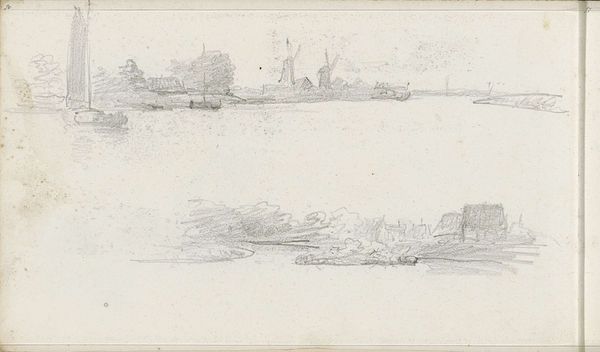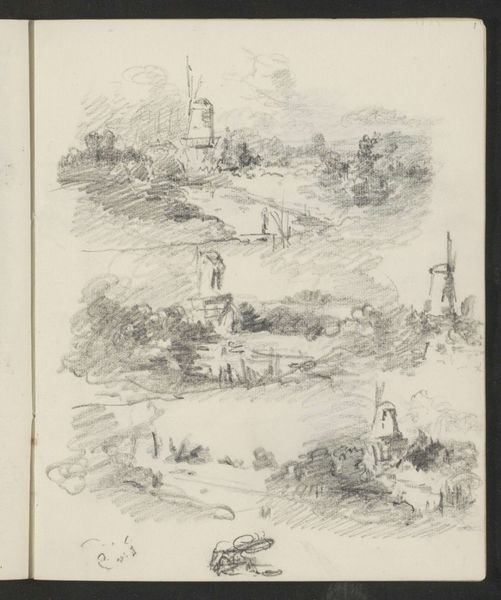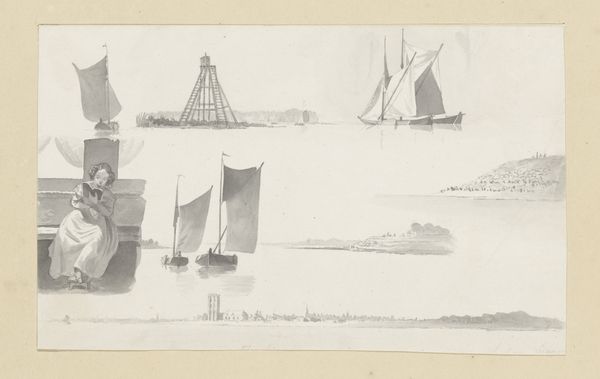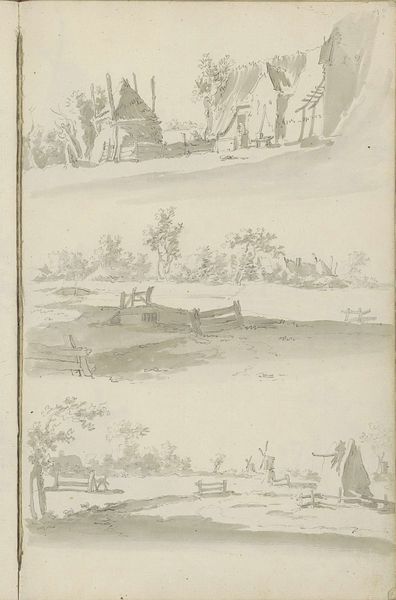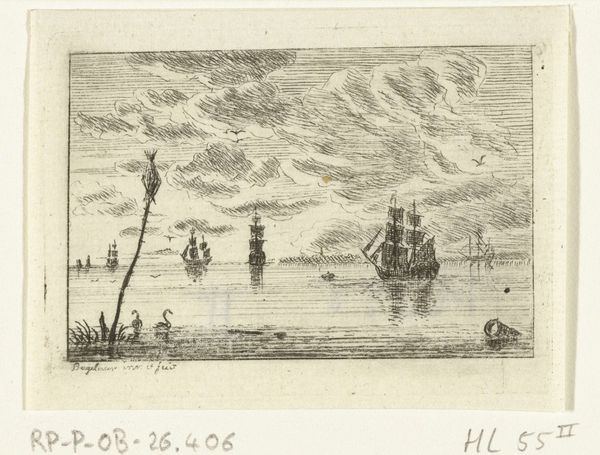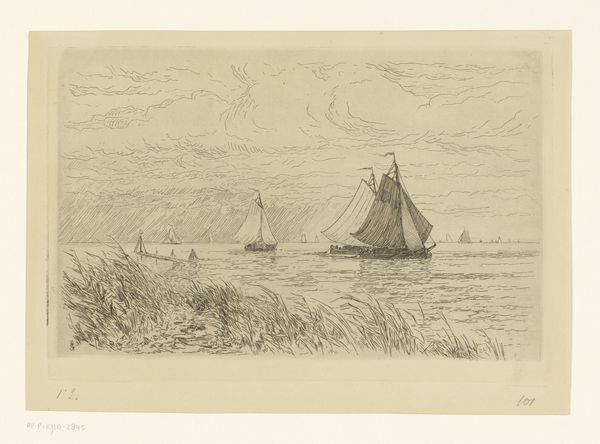
drawing, paper, pencil, graphite
#
drawing
#
landscape
#
paper
#
romanticism
#
pencil
#
graphite
Dimensions: height 258 mm, width 160 mm
Copyright: Rijks Museum: Open Domain
Editor: So, this drawing is called "Drie landschappen," or "Three Landscapes," created between 1811 and 1816 by Robert Hills. It’s graphite and pencil on paper. The thing that strikes me is the almost detached way it presents these rural scenes, like quick observations in a sketchbook. What can you tell us about this work? Curator: What you're sensing is likely the impact of Romanticism on landscape art at the time. The landscapes appear devoid of idealized grandeur, replaced instead with sketches reflecting the everyday and a connection with local geography. This artistic choice directly challenged the aristocratic aesthetics favored by institutions like the Royal Academy. Hills’s focus shifts towards the burgeoning middle class’s connection to a more accessible, relatable landscape. How might the choice of graphite and pencil on paper contribute to this shift? Editor: Hmm, well, maybe the use of readily available materials emphasizes a break from traditional, more elaborate methods. Making art became less about formal training and expensive resources and more about observing and documenting the world around you. Curator: Exactly. Also, the “Three Landscapes” title highlights a burgeoning practice of amateur art appreciation and the growth of landscape painting as a tool for communicating political identity. Editor: That’s interesting. The sketches also include industrial features, such as windmills and boats for trade. How were those viewed? Curator: Good eye. By including these elements, Hills acknowledged their role in shaping society. While some Romantics favored untouched nature, Hills seems to be integrating industry, reflecting its inescapable influence. This inclusion, however subtle, implicitly questions the dominant narrative of pure, untamed wilderness valued by the elites. It's about celebrating the economic realities of everyday life. How do you see these landscapes functioning within a broader historical narrative of art and social change? Editor: I see them now as visual notes contributing to a larger cultural shift where art serves a social purpose rather than just being aesthetically pleasing. Curator: Indeed. It’s about democratizing both art production and viewership.
Comments
No comments
Be the first to comment and join the conversation on the ultimate creative platform.
